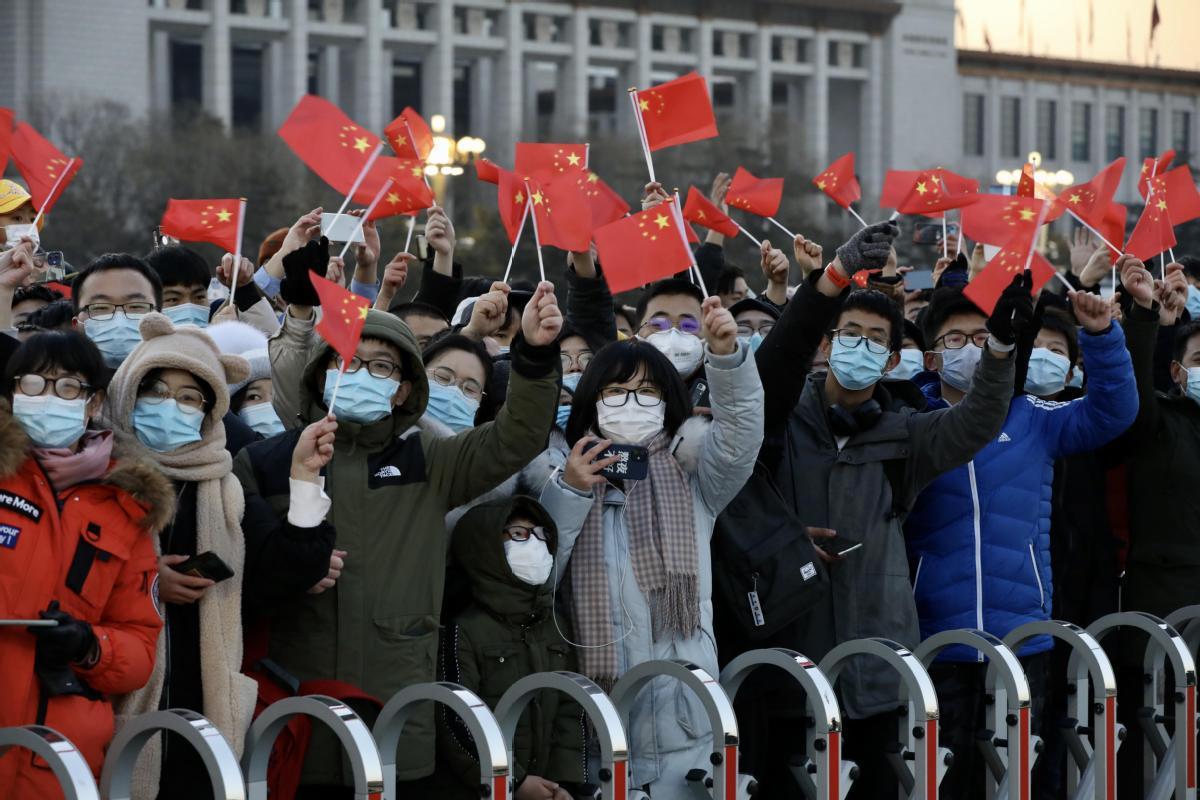
Waving Chinese flags, people crowd Tian'anmen Square in Beijing to watch the flag-raising ceremony on Jan 1, 2021. [Photo by Zhu Xingxin/chinadaily.com.cn]
BEIJING - With best wishes to a fresh start, thousands of visitors gathered in Tian'anmen Square in downtown Beijing at around 6 am for the first national flag-raising ceremony of 2021, after a year of a hard slog against COVID-19.
Guo Jiangfeng, 37, together with his family, joined the crowds, expecting an inspiring new year for his start-up business.
"Despite the impact of COVID-19, my company doubled the size in terms of employees and went full steam ahead thanks to government support measures in rent, taxes and social security fees," Guo said.
Festive atmosphere was felt across the country. From Thursday night to Friday morning, the Hanshan Temple in the eastern Chinese city of Suzhou livestreamed its bell ringing for the coming new year.
The city of Qufu in east China's Shandong Province, the birthplace of Confucius (551-479 BC), an educator and thinker, kicked off a series of online and offline traditional folk activities including couplets-writing and bell-striking for blessings.

Medical workers prepare for nucleic acid testing in Shenyang, capital of Northeast China's Liaoning province, Friday, Jan 1, 2021. On Thursday, Shenyang started conducting nucleic acid tests for all residents in nine districts. [Photo/Xinhua]
As citizens enjoy their family reunions and holiday celebrations, medical workers in different places are still on duty to fight COVID-19.
Fu Yanyang, a 29-year-old nurse in Shenyang, capital of Northeast China's Liaoning province, got up early. The province has recently reported multiple locally transmitted COVID-19 cases.
"In my hospital, we test around 1,800 people a day," he said, referring to the ongoing large-scale nucleic acid testing in Shenyang.
Yin Ling, a researcher with the Shenzhen Institute of Advanced Technology under the Chinese Academy of Sciences, waved goodbye to the bittersweet year 2020 laden with both risk and reward.
With the help of big data, the tech-savvy researcher studies the spread characteristics of the virus among the population. Her model, built on collected data, simulates the temporal and spatial spread of the coronavirus and provides a reference for disease prevention and control.
"As the country places independent innovation at a more prominent position, we will continue to work hard in research to expand the role of big data in various sectors," she said.


